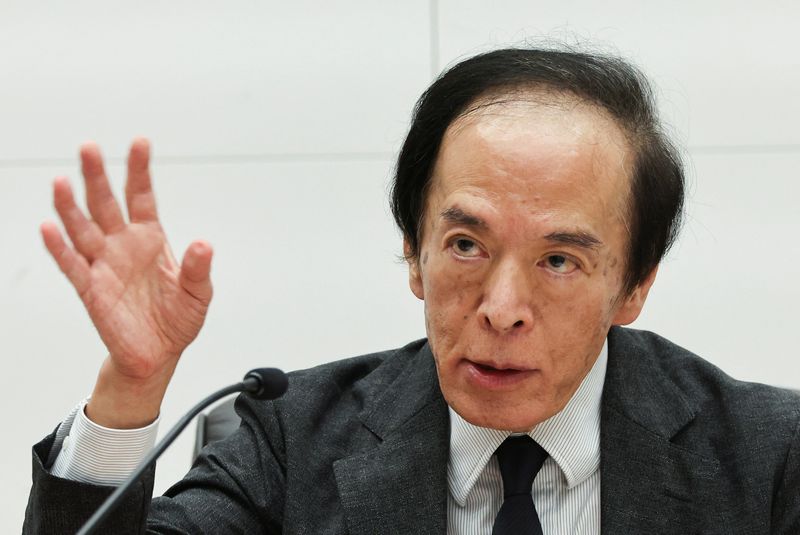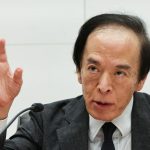OSAKA (Reuters) -The Bank of Japan can afford to spend time watching developments in financial markets and overseas economies as it sets monetary policy, Governor Kazuo Ueda said on Tuesday, suggesting that the central bank was in no rush to raise interest rates further.
He also voiced hope of scrutinising service-price data for October, many of which are due out in November, in determining whether underlying inflation was accelerating toward the BOJ’s 2% inflation target – a prerequisite for hiking interest rates.
“October is a month when service-price revisions are concentrated in Japan, so we must scrutinise data carefully,” Ueda told a news conference after meeting with business leaders in the western Japan city of Osaka.
“While there are some elements we can estimate in advance, we need to look at actual data to confirm,” he said, suggesting the BOJ will wait at least until December to hike rates again.
The BOJ next meets for a policy meeting on Oct. 30-31, when the board will also conduct a quarterly review of its growth and inflation forecasts.
Ueda reiterated that the BOJ will raise rates if underlying inflation accelerates towards its 2% target as projected, a sign there was no change to its stance to gradually push up borrowing costs from still near-zero levels.
But he warned of risks surrounding the outlook, such as volatile financial markets and uncertainty on whether the U.S. economy can achieve a soft landing.
“We must conduct policy in a timely, appropriate fashion without having any pre-set schedule in mind, taking into account various uncertainties,” Ueda said in a speech to business leaders in Osaka.
The yen’s “one-sided declines” have reversed since August and significantly lowered the risk of an inflation overshoot by moderating the pace of rise in import prices, Ueda said.
“We need to scrutinise market moves and overseas economic developments behind them in setting monetary policy. We can afford to spend time doing this,” he said.
The remarks highlight a shift in the BOJ’s focus away from inflationary risks, towards the chance of slowing global growth and yen rises weighing on Japan’s export-reliant economy.
They were roughly in line with those Ueda made after the BOJ’s policy meeting on Friday, when the board unanimously voted to keep short-term rates steady at 0.25%.
Ueda stressed that domestic economic conditions were moving in line with the BOJ’s projection with rising wages underpinning consumption and helping push up service-sector prices.
But he highlighted the need to watch growing overseas risks, such as uncertainty on how past aggressive interest rate hikes by the Federal Reserve could affect the U.S. economy.
Financial markets remained “somewhat unstable,” Ueda added, stressing the need to keep monitoring market developments with “utmost vigilance.”
The BOJ ended negative interest rates in March and hiked short-term rates to 0.25% in July, in a landmark shift away from a decade-long stimulus programme aimed at firing up inflation and economic growth.
The start of Japan’s rate-hike cycle comes as many other central banks cut interest rates after tightening monetary policy aggressively to combat high inflation.

The Fed, for one, last week kicked off an anticipated series of rate cuts with a half-percentage-point reduction after soft labour market data.
Japan’s core consumer inflation accelerated for the fourth straight month in August and tracked comfortably above the central bank’s 2% target, keeping alive expectations for further interest rate hikes.
To read the full article, Click Here

